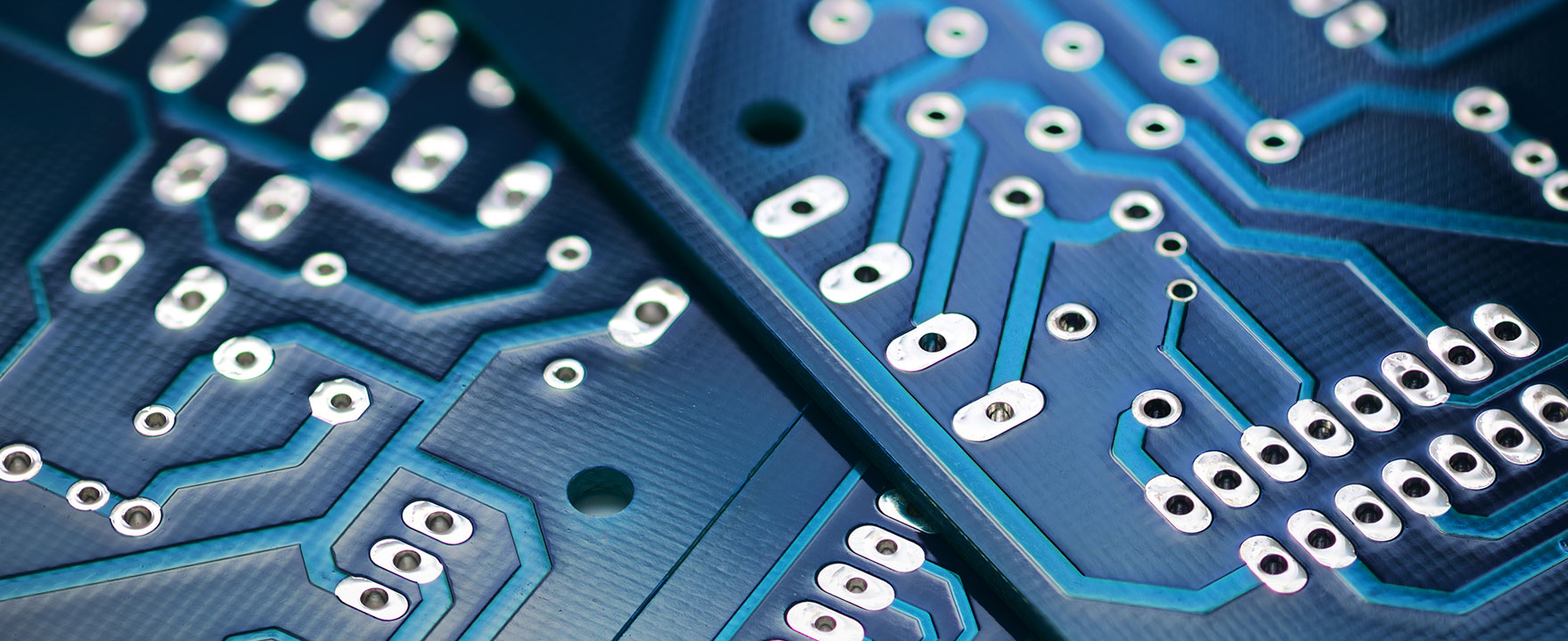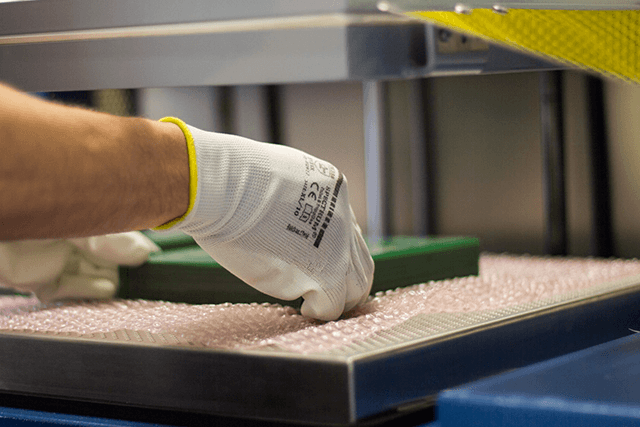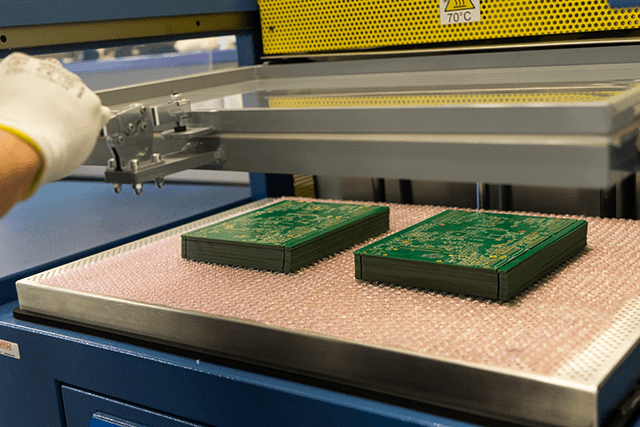
broad Capabilities
The capabilities go beyond just supplying PCBs. We also provide meetings, seminars and courses for our customers in which we share our expertise. Where necessary, we have engineers from our production sites come over to share practical experience with you.
We provide excellent Advise & support
AQC has the expertise to think along and advise during the design phase of the PCB. We assure you that we will answer all questions quickly, adequately, but above all in a customer-oriented way.
Explore more


CapabilitiesInformation by product
Multilayer Products
A Multilayer consists of at least three or more copper layers. Often a multilayer is made from one type of base material. However, it is possible to use different materials, we call this a hybrid print.Between the copper layers is prepreg which is compressed this togetter forms a multilayer. The complexity of the fabricating process determines the price, where drills such as blind, buried and stacked vias are a factor that make the product multiple times through the entire fabrication process and this increases the cost.
- Increased functionality
Small size, resulting in lesser weight.
- More possibilities in the choice of components
(micro) BGA, density of assembly.
- The more layers
The more compact the design can be maintained.
Special Products
AQC is regularly involved in research and development projects. We work together with the end customer towards a final result.Over the years, we have successfully completed various projects. AQC has both internal and external specialist knowledge from experienced engineers with whom we maintain short lines of communication. Our years of experience allow us to apply the knowledge gained to other projects.
- Heavy copper boards
> 200 mu
- Extreme PCB sizes
> 5000 mm
- Buried components
Different constructions are feasible
- Stretchable Circuit Technology
a solution for every application
- 3D Heatsink (copper coin technology)
many opportunities that are discussable
- track/gap < 50 mu
we give advice on what is possible with your design
- Exotic Materials
for all heat/current/impedance requirements
- ect.
everything is discussable
Aluminum Products
An aluminum PCB belongs to the group MCPCB. This is usually a single-sided PCB with a carrier made of aluminum. The purpose is of aluminum is to effectively dissipate heat from certain areas or critical components.An MCPCB has a copper layer pressed against a metal carrier with a prepreg as an insulator. The backing can be either aluminum or copper, with aluminum being the most favorable price-wise. Copper has the best thermal properties. In addition to single-sided PCBs, double-sided or multilayer PCBs are also possible on a metal carrier.
- Better heat transfer compared to regular FR4 material
The heat problem is effectively addressed, thinking for example of LED applications
- Design rules are standard
There are no special rules for designing an MCPCB
- More versions possible
Copper thickness, insulator with different heat properties, Other thickness of metal carrier, Copper instead of aluminum
- Not limited to 1 layer
Although a single-sided PCB is the most common, it is possible to design a PCB with more than one layer on a metal carrier.
Flex Rigid Print
Flex-Rigid PCBs are often used when space in housing is limited or in applications where cables cannot be a solution. The connections between the flex- and rigid part are very solid and reliable.Flex-Rigid PCBs are part of more complex PCBs and are therefore a lot more expensive than standard PCBs. The time required to produce Flex-Rigids is longer than for standard PCBs. The many advantages of Flex-Rigids quickly outweigh the additional costs involved. Such PCBs are highly suitable for military and aerospace systems.
- Solution for lack of space
Fits into very compact housing because of its flexibility. Also, the PCB can be designed in a smaller size
- No connectors needed
In many cases, the combined solution eliminates the need for connectors
- Reduced assembly time
nnectors do not need to be assembled or connected
- Solid interconnection between cable and PCB
No solder connection between cable and PCB so more reliable and no transition resistance
High Density Interconnect (HDI)
HDI is one of the fastest growing technologies in the PCB industry. It has a higher track density compared to a regular PCB. HDI boards often contain blind and/or buried via's.Using an HDI board provides more opportunities for components to be placed on both sides of the board. HDI technology uses the non-mechanical drilling method which mainly uses LDI (laser). Also, different ways of filling and stacked holes are used during the manufacturing process.
- Smaller in size and weight
With an HDI board, you can fit more components on both sides of the PCB. This allows you to get more functionality out of a small area. With HDI technology, you can add functionality while reducing the size and weight of your products.
- Improved electrical performance
Due to the shorter distance between components and a larger number of transistors. These characteristics reduce power consumption, this improves signal transmission.
- Increase in price/quality ratio
HDI cards can be cheaper than other options with proper planning and production because they require fewer raw materials due to their smaller size and the low number of layers they require.
- Increasing reliability
Smaller aspect ratios and the high-quality construction of microvias can increase the reliability of your PCB and your final product.
RF Printed Circuit Board
PCBs with radio frequency (RF PCBs) are an increasingly used technology within the PCB industry. An RF PCB operates at a high frequency, up to over 100 MHz. At 2 GHz radio frequency and above, it is classified as a Microwave PCB.New technologies are increasingly using these RF applications. This requires manufacturing according to high-quality standards. The selection of the right RF materials, depending on the application, is the most critical aspect of an RF PCB. It is essential to have a thorough understanding of the properties of various materials. An RF PCB typically uses controlled impedance.
- Design
It is important to know which (impedance) signals are needed and what the application will be, in order to be able to give good advice.
- Base material selection
Loads of possibilities: from normal FR-4 base material to various Rogers/Arlon/Taconic materials.
- Costs
Costs can be made controllable looking at the suitable production location. Capabilities, stocks of materials, are some of the characteristics that need to be looked at.
Flexible Circuits
Flex PCBs are a connection between electronic parts and due to the small space they require, often used in many modern day electronics. In addition, flex PCBs are more resistant to heat compared to normal cables.Flex PCBs can be single-sided, double-sided or multilayer. Flex PCBs are costly, but not always more expensive compared to conventional cables. Connecting flex PCBs takes little time and can hardly be wrong. Blind and buried holes can also be applied in flex PCBs. To improve assembly or mounting they can be equipped with stiffners.
- Thermal management
Flex PCBs can handle heat better compared to standard cables
- Reliable
Because Flex PCBs are one piece it is a very strong solution.
- Fewer mistakes
No cable assembly required, so no chance of connection errors
- Manoeuvrable
Application in a complex room possible due to the flexibility of the flex
- Minimal space
Flex PCBs are very thin and therefore little space is needed to make a connection between 2 PCBs.
Single-Double Sided
If component density becomes an issue, it is better and easier cosider 2-layer board to create additional space for the components.Single-sided circuit boards are easy and fast to produce and still dominate the world market. A double-sided circuit board is the most popular type of circuit board.
- Fair price/quality
Due to simple and basic designs well applicable for simple circuit designs.
- Less complex
Small to no problems in the PCB process. This makes it easier for higher volumes and fast delivery times.
- Component density
DS 2x space on the PCB.
- Pricing
low due to standard production process.

We treasure our Lab & quality
Explore moreWe cherish our independence, especially in quality control. Our in-house laboratory is equipped to double check the quality of delivered products. Did we receive exactly what you asked for, undamaged and ready to use? No product leaves the AQC headquarters without inspection according to AQL method.
About us Why AQC
AQC wants to know what is important to the customer. Every experience is taken into account for improvement. Communication, expertise and speed in all departments is where we want to distinguish ourse
More about usCompetitive prices
We have the most competitive prices on the PCB market, prices with no hidden extra charges or fees.
We are independent
We pride ourselves on being independent. This allows us to distinguish ourselves through our flexibility and speed. Quality comes first.
Working together with AQC also offers the following advantages
- Fast delivery / short lines
- Guaranteed Quality
- Expertise in all departments
- PCB knowledge
- In-house laboratory
- Common sense
Interested? Request a quote directly
Capabilities:
- PCB
Although AQC has fun as a business model we have to make a living out of supplying Printed Circuit Boards. From simple to complex, from fast delivery to standard, from small series to large with correct quality/price balance. Specify what you have a need for and AQC will take care of it completely.
- LABORATORY
AQC continues to expand into the laboratory. We use these machines not only for our own supplied products, but also for our customers who have issues with unexpected behavior of a PCB.
- MEETINGS, SENIMARS AND WORKSHOPS
We understand that with the closure of production sites in the Netherlands and Belgium, a lot of knowledge has been lost. For this knowledge you can come to us. AQC has created a room where we can easily host 20 to 30 people and discuss topics that are relevant to you. Everything is negotiable and where necessary we provide experts from the field.
Do you have any questions or want to make an appointment?Contact us
- info@aqcbv.com Send us an email
- 088-0045500 Reachable from 08.00 to 17.00 hours

